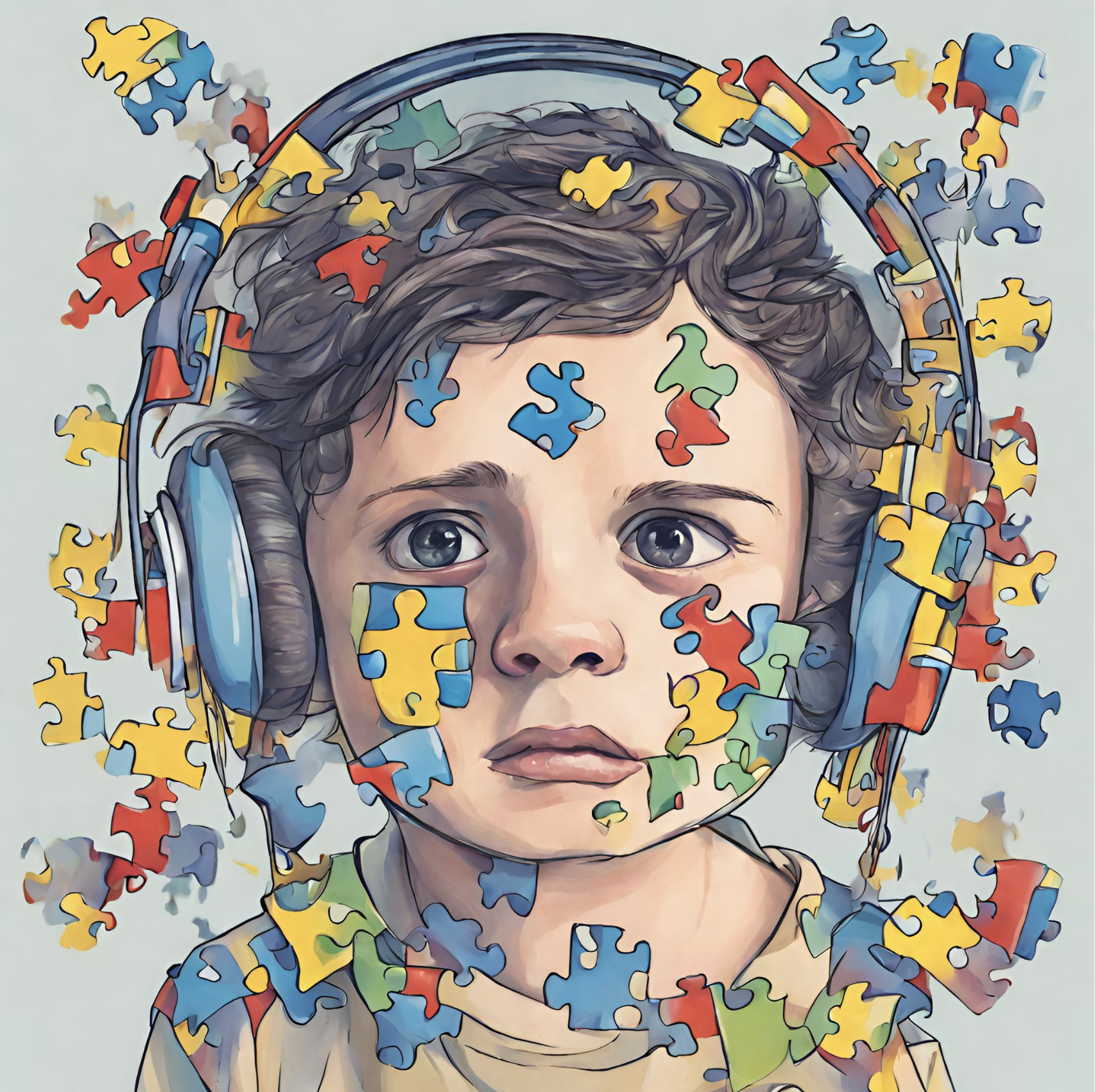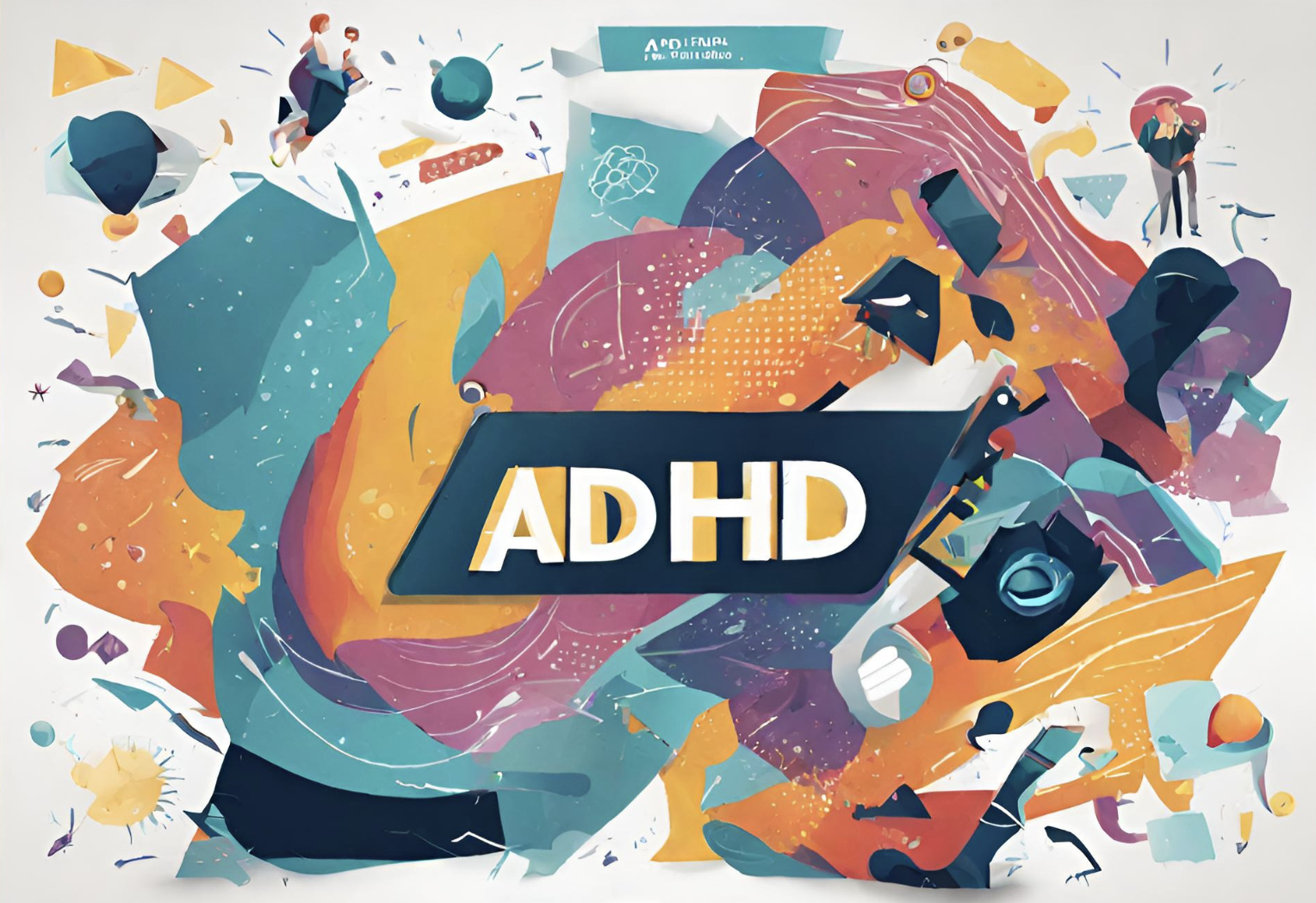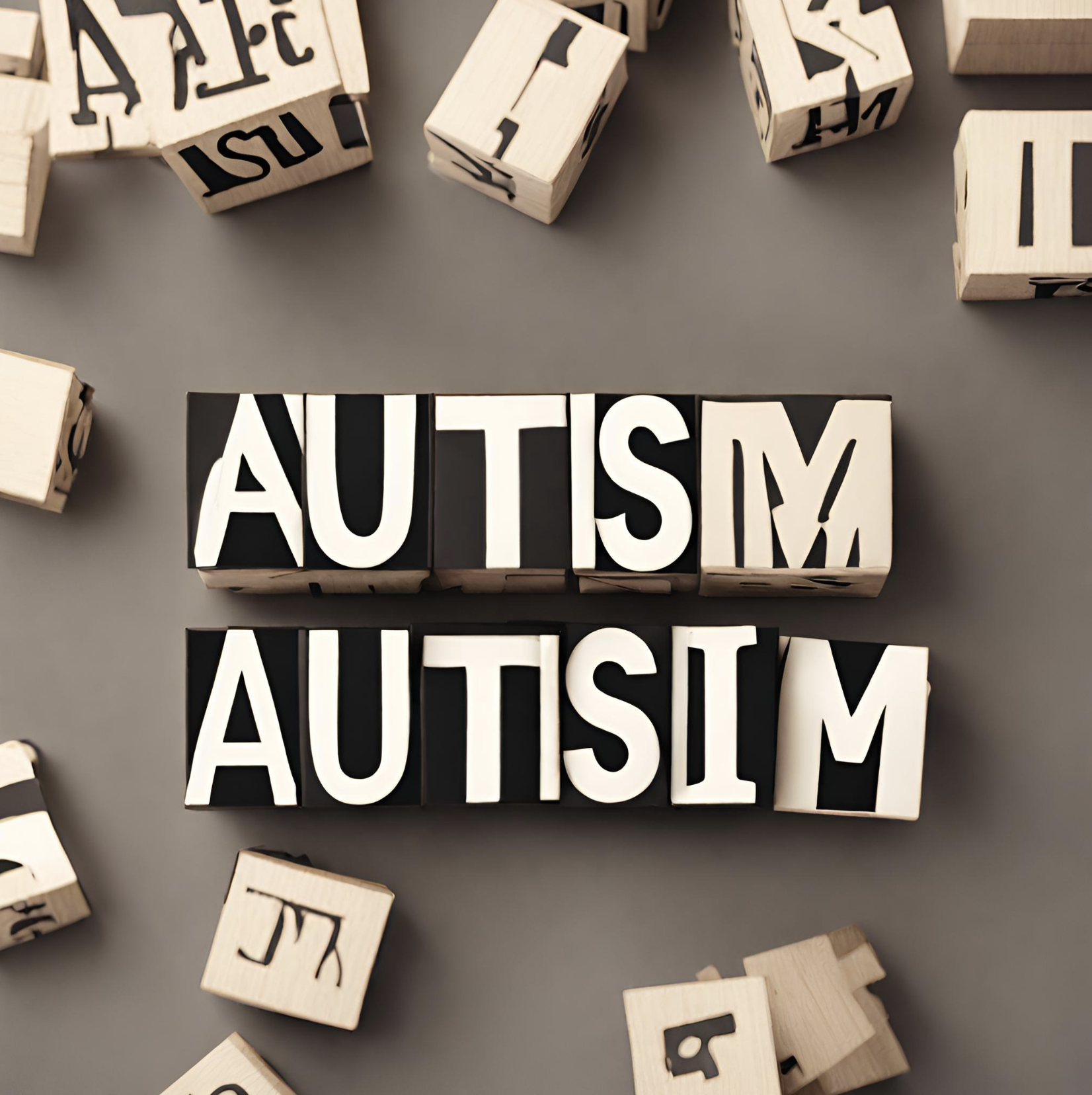Imagine a world where the hum of fluorescent lights isn’t a constant thrumming in your head, where the cacophony of a bustling street fades into a gentle murmur, and where the scratchy wool sweater doesn’t send shivers down your spine. For many individuals with neurodiverse conditions like autism and ADHD, this isn’t a fantasy – it’s a necessity.
Sensory overload, the overwhelming bombardment of sensory information, can be a daily struggle for those who process the world differently. This can manifest in various ways: bright lights causing migraines, loud noises triggering anxiety, strong smells inducing nausea, or certain textures leading to meltdowns.
However, by creating sensory-friendly environments, we can significantly improve the lives of neurodiverse individuals. These spaces provide a sense of calm, control, and predictability, allowing them to participate more fully in daily activities without the constant struggle against sensory overload.
Understanding Sensory Processing
It’s crucial to acknowledge that neurodiverse individuals often process sensory information differently than the neurotypical population. This can be categorized into two main areas:
- Hypersensitivity: Certain senses are overly sensitive, leading to discomfort or aversion to specific stimuli like loud noises, bright lights, strong smells, or rough textures.
- Hyposensitivity: Some senses may be under-responsive, leading to a need for increased sensory input to feel engaged. This could involve seeking out loud noises, rough textures, or constant movement.
Building a Calming Haven and Avoid Sensory Overload
Creating a sensory-friendly environment involves considering the impact of various sensory inputs and implementing strategies to manage them. Here are some key areas to focus on:
1. Visual Stimulation:
- Clutter Control: Minimize visual clutter by organising belongings, using clear storage solutions, and avoiding excessive decorations. A cluttered space can be overwhelming and visually overstimulating.
- Colour Palette: Opt for neutral colours and avoid busy patterns that can be distracting. Consider incorporating calming colours like blue or green, as these are often associated with tranquility.
- Lighting: Employ natural light whenever possible. Utilise dimmable lights and avoid harsh overhead lighting. Consider sensory mood lights for calming effects and adjustable colour palettes.
2. Auditory Stimulation:
- Noise Reduction: Minimise background noise by using soundproofing materials, turning off unnecessary electronics, and encouraging quiet activities.
- Designated Quiet Areas: Provide a quiet space to retreat to when overwhelmed by noise. This could be a library corner, a designated relaxation room, or even a quiet corner in a classroom.
- Sensory Tools: Offer noise-cancelling headphones or ear defenders for individuals who find specific sounds unbearable. This can be particularly helpful in loud environments like shopping centres or busy streets.
3. Tactile Stimulation:
- Texture Awareness: Be mindful of textures in furniture, clothing, and everyday objects. Offer a variety of textures for individuals to explore and self-regulate. This could include soft blankets, smooth surfaces, or textured fidget toys.
- Fidget Toys: Providing fidget toys with different textures can be a helpful tool for managing anxiety and focusing attention. These can be anything from simple stress balls to textured chewable necklaces.
- Weighted Blankets: Some individuals find deep pressure calming, so weighted blankets can be a beneficial tool for managing sensory overload and promoting relaxation.
4. Olfactory Stimulation:
- Air Quality: Maintain good air quality by ensuring proper ventilation and avoiding strong perfumes or cleaning products. These can trigger sensitivities and cause discomfort.
- Calming Scents: Offer essential oils or diffusers with calming scents like lavender or chamomile. These can create a more soothing atmosphere and promote feelings of well-being.
5. Additional Considerations:
- Temperature Control: Maintaining a comfortable temperature is crucial. Extreme heat or cold can exacerbate sensory sensitivities and lead to discomfort.
- Flexible Seating: Offer flexible seating options like beanbags or wobble chairs to allow for movement and self-regulation. This can be particularly beneficial for children with ADHD who may struggle to sit still for long periods.
- Sensory Tools: Provide access to sensory tools like fidget spinners, chewable necklaces, or calming putty. These can be helpful for individuals who need additional sensory input to self-regulate.
- Communication: Clearly communicate expectations and provide visual aids when necessary. This can help individuals with sensory processing difficulties understand their surroundings and anticipate potential triggers.
- Sensory Breaks: Encourage regular breaks in quiet spaces for individuals to self-regulate. This could involve taking a walk outside, lying down in a quiet room, or simply taking a few deep breaths.

Coaching for Sensory Overload Management
Beyond creating a sensory-friendly environment, coaching can be a powerful tool for individuals with ADHD and/or autism to manage sensory overload. A trained coach can provide personalised guidance and support in developing self-awareness of sensory triggers, identifying and implementing coping mechanisms, and building resilience to overstimulation. Through coaching, individuals can learn valuable skills like:
- Identifying Early Warning Signs: Recognising the subtle signs of sensory overload before it escalates into a meltdown or shutdown. This can include physical sensations like increased heart rate, difficulty concentrating, or feeling overwhelmed.
- Developing Calming Strategies: Practicing techniques like deep breathing exercises, mindfulness meditation, or progressive muscle relaxation to self-regulate and regain composure when experiencing sensory overload.
- Communicating Needs Effectively: Learning to communicate their sensory needs clearly and confidently to others, whether it’s requesting a quiet space, adjusting lighting, or simply taking a break.
- Building a Support Network: Identifying and connecting with supportive individuals who understand their challenges and can offer encouragement and assistance.
Building a More Inclusive World
Creating sensory-friendly environments benefits everyone, not just neurodiverse individuals. These spaces promote:
- Reduced Anxiety and Stress: By minimising sensory overload, individuals feel calmer and more in control, leading to reduced anxiety and stress levels.
- Improved Focus and Concentration: A less stimulating environment allows for better focus and engagement in tasks, enhancing productivity and learning.
- Enhanced Social Interaction: Sensory-friendly spaces create a more inclusive environment, fostering positive social interactions and reducing social isolation.
- Increased Participation: Individuals with sensory sensitivities are more likely to participate in activities and events when their needs are met, leading to a richer and more fulfilling life.
By implementing these strategies, we can create spaces that are welcoming and accessible for everyone. This allows neurodiverse individuals to thrive and participate fully in society without the constant struggle of sensory overload. Remember, small changes can make a significant difference in the lives of those who experience the world differently.
Let’s work together to build a world where sensory-friendly environments are the norm, not the exception. A world where everyone feels comfortable, empowered, and embraced for who they are.

Useful Links for Sensory Overload
Here are some helpful links for further information on creating sensory-friendly environments and managing sensory overload:
General Resources:
- The Sensory Processing Disorder Foundation
- Autism Spectrum Australia
- The National Autistic Society (UK)
- Sensory Friendly
Articles and Guides:
- Coping Strategies for Adults with Sensory Overload
- Treating Sensory Processing Issues
- Resources for Parents and Professionals
Coaching and Support:
- The Very Versatile Lemon – ADHD & ASD Coaching
- The International Coach Federation (ICF)
- ADDitude Magazine
- The National Association of Social Workers (NASW)
Remember, these are just a few starting points. Many other resources and organisations are dedicated to supporting individuals with neurodiverse conditions and sensory sensitivities.
Autism Spectrum Disorder (ASD) is a neurodevelopmental condition characterised by challenges with social interaction, communication, and repetitive behaviours. Social interaction can be a particularly complex area for individuals with autism, often leading to feelings of isolation and frustration. However, autism and social skills coaching can be a powerful tool in helping individuals navigate the social landscape and build meaningful connections.
Understanding Social Skills Difficulties in Autism
Social skills encompass a broad range of abilities, including:
- Non-verbal communication: Reading and interpreting facial expressions, body language, and tone of voice.
- Verbal communication: Initiating and maintaining conversations, using appropriate language for the situation, and understanding turn-taking.
- Social cognition: Understanding social cues, recognising emotions in others, and understanding social norms and expectations.
- Empathy: The ability to understand and share the feelings of others.
Individuals with autism may experience difficulties in any or all of these areas. Some common challenges include:
- Nonverbal communication: Reading facial expressions, body language, and tone of voice can be challenging. Misinterpreting these cues can lead to misunderstandings and awkward interactions.
- Theory of mind: This refers to the ability to understand that others have their own thoughts, feelings, and intentions. Difficulty with theory of mind can make it hard to predict how someone might react or feel in a situation.
- Social reciprocity: Initiating and maintaining conversations, taking turns, and understanding social norms can be complex.
- Sensory processing: Oversensitivity to certain sounds, smells, or textures can make it overwhelming to focus on social cues or engage in interactions.
- Difficulty making eye contact.
- Taking things literally and missing sarcasm or jokes.
- Difficulty understanding social cues and unwritten rules.
- Appearing withdrawn or disinterested in social interactions.
These challenges can make it difficult for people with autism to make friends, participate in social activities, or build relationships. Autism and social skills aims to bridge this gap and equip them with the tools they need to navigate social situations with greater confidence and understanding.

The Benefits of Autism and Social Skills Coaching
Coaching offers a range of benefits for individuals with autism who struggle socially, including:
- Improved communication skills: Learning to use nonverbal cues effectively, initiating and maintaining conversations, and adapting communication styles for different situations.
- Enhanced social cognition: Developing the ability to understand social cues, recognise emotions in others, and navigate social norms.
- Increased self-awareness: Gaining a better understanding of their own social behaviours and the impact they have on others.
- Reduced anxiety: Learning coping mechanisms to manage anxiety associated with social interactions.
- Greater confidence: Building the skills and knowledge needed to participate in social activities more confidently.
- Improved social relationships: Developing and nurturing stronger friendships and connections with others.
Autism and Social Skills Coaching Techniques
Autism and social skills coaching can involve a variety of techniques, tailored to the individual’s specific needs and learning style. Here are some common approaches:
- Strength-based approach: Focussing on incorporating client strengths to overcome social and emotional challenges.
- Direct instruction: Teaching social skills explicitly, breaking them down into smaller steps, and providing clear explanations.
- Modelling: Demonstrating social skills through role-playing, video demonstrations, or social stories.
- Practice: Providing opportunities to practice social skills in a safe and controlled environment, such as role-playing scenarios or group activities.
- Feedback: Offering constructive feedback to help individuals improve their communication and social interaction skills.
- Positive reinforcement: Rewarding positive social behaviours to encourage their development.
- Visual aids: Using visual tools like pictures, charts, or social scripts to support learning and understanding.
The Role of Coaching in Everyday Life
Autism and social skills coaching can extend beyond sessions and into daily life. Here are some ways parents, carers, and educators can support social skills development:
- Provide opportunities for social interaction: Encourage participation in social activities, clubs, or sports teams.
- Model appropriate social behaviours: Demonstrate positive social interactions with others.
- Use clear and concise language: Avoid sarcasm or complex instructions.
- Break down social situations: Explain social cues and expectations beforehand.
- Offer positive reinforcement: Praise efforts and celebrate social successes.
- Remember that those with autism have different brain wiring: Avoid reacting to behaviours negatively or with frustration. It is more likely than not that the autistic individual is unaware or confused about appropriate behaviours. Use these situations as teachable moments.
Finding the Autism Coach
The effectiveness of autism coaching depends on finding a qualified and experienced practitioner. Here are some factors to consider when choosing a coach:
- Qualifications: Look for a coach with experience working with individuals with autism and a relevant qualification in social work, psychology, or education.
- Approach: Consider the coaching approach and whether it aligns with the individual’s learning style and needs.
- Experience: Ask about the coach’s experience working with social skills in autism.
- Communication style: Choose a coach with a positive and encouraging communication style.

Building a Supportive Network
Autism and social skills coaching can be a powerful tool, but it’s important to remember that it’s a journey, not a destination. Patience, support, and a focus on progress are key. Additionally, building a supportive network of friends, family, and professionals is crucial for individuals with autism to thrive socially. By fostering a sense of understanding and inclusion, we can create a world where everyone feels empowered to connect and participate meaningfully.
Remember:
- Autism coaching is not about becoming neurotypical, but about developing strategies that work for the individual.
- Every person with autism is unique, and their social skills needs will vary. Social skills coaching can be a lifelong process, offering ongoing support and guidance as individuals navigate different social situations throughout their lives.
Conclusion
Social interaction can be a complex dance, but with the right support and strategies, individuals with autism can develop the skills they need to connect with others and build meaningful relationships. Autism and social skills coaching offers a valuable tool for empowering them to navigate the social landscape with confidence and participate actively in the world around them. By fostering a more inclusive and understanding environment, we can ensure everyone has the opportunity to connect and thrive.

Useful Links
These links provide a variety of resources for both individuals with autism and those who support them. They can be helpful for learning more about social skills coaching, finding relevant resources, and understanding social skills development in autism.
- The Very Versatile Lemon: Offers ADHD and autism coaching, including that with a focus on social skills, to clients in Australia and worldwide. Katie has lived experience with autism and has a background in education, with over 12 years experience working in schools.
- National Autistic Society: Provides information and resources on autism, including social skills development.
- Autism Speaks: Offers resources on social skills development for individuals with autism and their families.
- Social Skills Activities for Children with Autism: Provides free downloadable resources for developing social skills in children with autism.
- Raising Children Network : Provides tips and strategies for helping children with autism develop social skills.
- The Jed Foundation: Offers information on the social skills challenges faced by individuals with autism.
- Autism at King’s College London: Provides a research-based view of social communication difficulties in autism.
- Understood.org Offers information on the different aspects of social skills and how they can be impacted by autism.
Remember: It’s important to choose resources and coaching services from reputable organisations with experience working with autism.
Attention Deficit Hyperactivity Disorder (ADHD) is a common neurodevelopmental condition that affects millions of individuals across all ages. Despite its prevalence, there are still many misconceptions surrounding ADHD. These misconceptions can lead to misdiagnosis, lack of understanding, and a sense of isolation for those living with ADHD. In this blog post, we’ll debunk some of the most common myths about ADHD, providing a clearer picture of this condition and its impact on individuals.
Myth #1: ADHD is Just About Fidgeting and Not Paying Attention
Truth: While inattentiveness and hyperactivity/impulsivity are core symptoms of ADHD, the condition manifests in a much broader way. Difficulty with organisation, planning, time management, emotional regulation, and self-control are all common challenges faced by individuals with ADHD. The presentation of these symptoms can also vary significantly. Some may predominantly struggle with inattention, appearing daydreamy or easily distracted, while others might exhibit more hyperactivity or impulsivity, leading to restlessness and difficulty sitting still.
Myth #2: ADHD Only Affects Children
Truth: ADHD is a lifelong condition, and its symptoms can persist well into adulthood. While some children may outgrow certain hyperactive behaviours, the core challenges of ADHD often continue to impact adults in their personal, academic, and professional lives. It’s estimated that around 2.5% of Australian adults have ADHD.
Myth #3: ADHD is Caused by Bad Parenting or Lack of Discipline
Truth: There’s no single cause for ADHD, but it’s believed to be a combination of genetic and environmental factors. Brain scans of individuals with ADHD show differences in brain structure and function compared to neurotypical brains. While parenting style can influence how ADHD manifests, it doesn’t cause the condition itself.
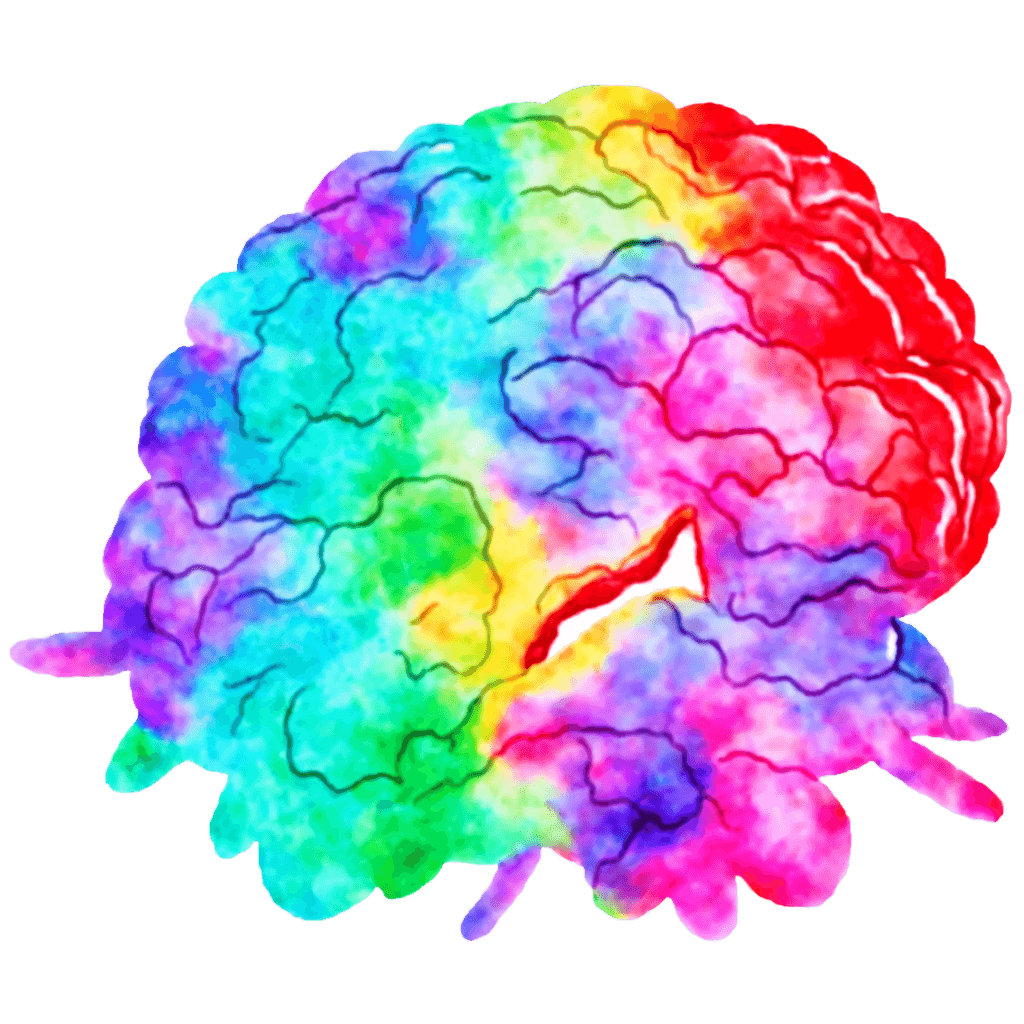
Myth #4: People with ADHD Can’t Be Successful
Truth: Many successful individuals across various fields have ADHD. Their stories highlight that ADHD doesn’t define potential. With proper diagnosis, self-awareness, and support strategies, individuals with ADHD can achieve great things. Some celebrities with ADHD include Rebel Wilson (actress), Richard Branson (entrepreneur), and Alan Jones (former race car driver).
Myth #5: Medication is the Only Way to Manage ADHD
Truth: While medication can be a valuable tool in managing ADHD symptoms, it’s not the only option. A comprehensive approach often includes:
- Psychotherapy: Cognitive behavioural therapy (CBT) can help individuals with ADHD develop strategies for managing their symptoms, improving emotional regulation, and building self-esteem.
- Coaching: ADHD coaching focuses on developing practical skills for managing time, organisation, and executive function challenges.
- Lifestyle changes: Regular exercise, a healthy diet, and adequate sleep can significantly improve symptoms and overall well-being for individuals with ADHD.
Additional Points
Here are some additional points to keep in mind:
- Accessibility to Diagnosis: Getting an ADHD diagnosis can be a lengthy and expensive process. This can be a significant barrier for those seeking support.
- Stigma: Unfortunately, stigma surrounding ADHD persists. This can be discouraging for those seeking diagnosis and support.
- Support Resources: While resources are available for individuals with ADHD, there’s a need for increased awareness and accessibility to support programs.
Moving Forward
By debunking these myths, we can create a more informed and understanding environment for those with ADHD. Here’s what we can do:
- Raise awareness: Educating others about ADHD can help reduce stigma and promote understanding.
- Advocate for better access to diagnosis and support: Prioritise making diagnosis and support services more accessible and affordable.
- Celebrate neurodiversity: Understanding and appreciating neurodiversity is crucial. ADHD comes with strengths as well as challenges.

Empowering Yourself and Others
Living with ADHD can be challenging, but it doesn’t have to hold you back. Here are some ways you can empower yourself and others:
- Seek a diagnosis: A diagnosis is the first step towards getting the support you need. While the process might be lengthy, it’s an investment in your well-being.
- Learn about ADHD: Educate yourself about the condition, its symptoms, and available management strategies.
- Connect with support groups: Connecting with others who understand your experiences can be invaluable. Online forums and local support groups can offer a sense of community and shared understanding.
- Advocate for yourself: Don’t be afraid to speak up for your needs, whether it’s at school, university, or work.
- Develop coping mechanisms: Explore what works best for you in managing ADHD symptoms. This might include techniques for time management, organisation, or emotional regulation.
- Celebrate your strengths: ADHD comes with unique strengths like creativity, problem-solving skills, and out-of-the-box thinking. Embrace these strengths and leverage them in your life.
Living with ADHD
If you have ADHD, you’re not alone. There are resources available to help you manage your symptoms and live a fulfilling life. Here are some resources you might find helpful:
- Attention Australia: https://www.adhdaustralia.org.au/
- Learning Difficulties Australia: https://ldaustralia.org/
- The Australasian College of Educational Psychologists: [invalid URL removed] (can help you find a qualified psychologist for ADHD assessment)
- Beyond Blue: https://www.beyondblue.org.au/ (provides support for mental health conditions, including ADHD)
Conclusion
ADHD is a complex neurodevelopmental condition, but it’s not a life sentence. By dispelling myths, promoting awareness, and advocating for better support, we can create a more positive and empowering environment for individuals with ADHD. Remember, you are not alone in this journey. With knowledge, self-acceptance, and the right support system, you can thrive with ADHD and achieve your full potential.
Anxiety. It’s a feeling most of us know all too well – that knot in your stomach, the racing thoughts, the constant hum of worry. But for autistic individuals, anxiety can be a particularly pervasive and complex challenge. Understanding how anxiety manifests in autism, and exploring strategies like coaching, can be a crucial step towards a calmer, more fulfilling life.
The Intersection of Autism and Anxiety
Statistics paint a clear picture: research suggests that anxiety disorders affect roughly 40% of autistic individuals. This significantly higher rate compared to the general population highlights a unique intersection between the two conditions. Here’s why anxiety might be more prevalent in autism:
- Sensory Overload: The world can be a barrage of overwhelming sights, sounds, smells, and textures for autistic individuals. This sensory overload can trigger fight-or-flight responses, leading to anxiety and stress.
- Social Challenges: Social interaction can be a minefield for autistic individuals. Difficulty interpreting social cues, navigating unspoken rules, and experiencing social rejection can fuel anxiety in social situations.
- Change and Routine: Autistic individuals often thrive on routine and predictability. Disruptions to routine or unexpected changes can cause anxiety and a sense of loss of control.
- Perfectionism and Black-and-White Thinking: Some autistic individuals have strong desires for order and perfection. When things don’t go according to plan or mistakes are made, it can trigger anxiety and self-criticism.
The Many Faces of Anxiety in Autism
Anxiety in autism can manifest in diverse ways – not always fitting the stereotypical image of panic attacks. Here are some common signs to watch for:
- Physical Symptoms: Headaches, stomachaches, fatigue, difficulty sleeping, and changes in appetite can all be signs of anxiety in autistic individuals.
- Repetitive Behaviours: Stimming behaviours, such as rocking or flapping hands, can increase in frequency or intensity when someone with autism feels anxious.
- Social Withdrawal: An autistic individual experiencing anxiety might withdraw from social interactions or activities they previously enjoyed.
- Meltdowns and Shutdowns: In extreme cases, anxiety can lead to meltdowns (overwhelming emotional outbursts) or shutdowns (withdrawal and disengagement from the environment).
The Impact of Anxiety in Autism
Unmanaged anxiety can have a significant impact on an autistic person’s life. It can:
- Impede Daily Functioning: Anxiety can make it difficult to complete daily tasks, attend school or work, and maintain relationships.
- Reduce Quality of Life: Constant anxiety can take a toll on mental and emotional well-being, leading to feelings of frustration, depression, and isolation.
- Hinder Self-Esteem: Fear of failure and social anxieties can negatively impact self-esteem and self-confidence.
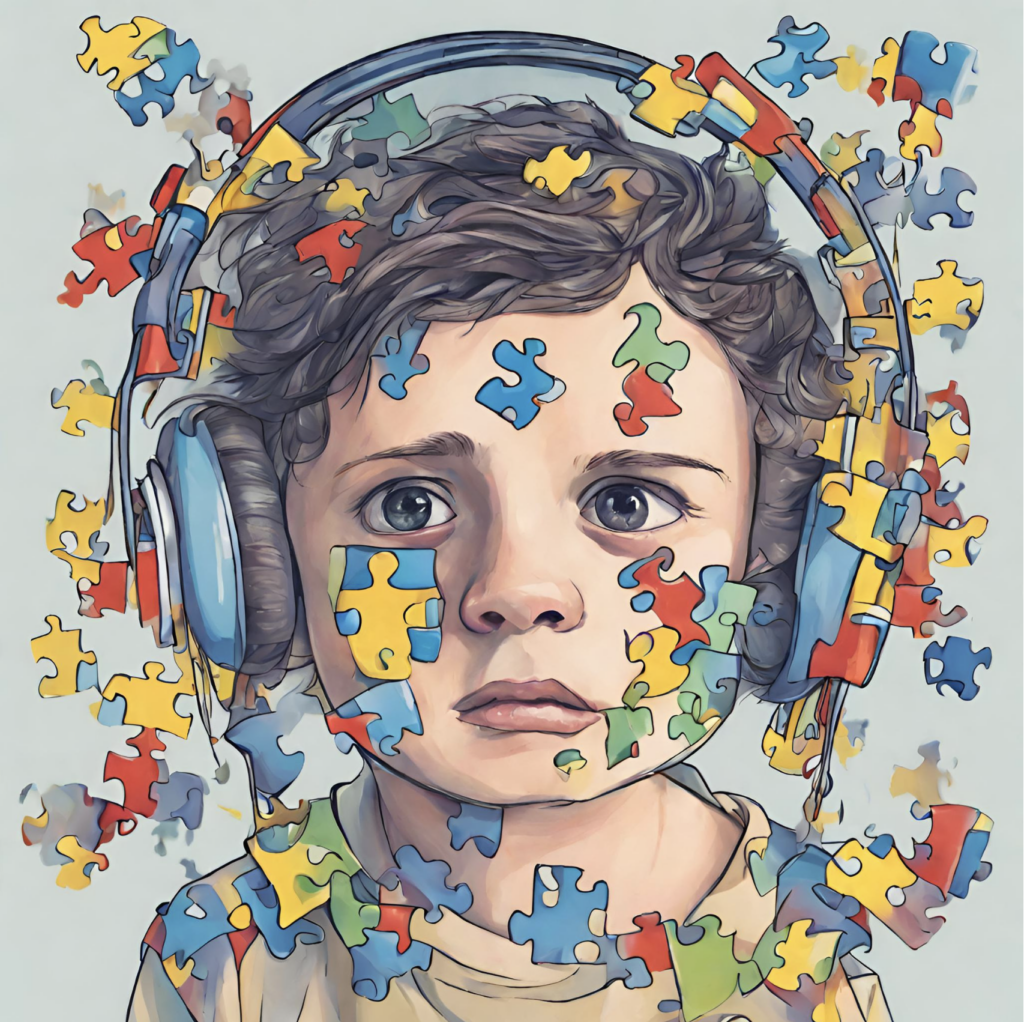
Strategies for Managing Anxiety in Autism
Fortunately, there are strategies that can help autistic individuals manage their anxiety. These include:
- Mindfulness and Relaxation Techniques: Practicing mindfulness meditation, deep breathing exercises, and progressive muscle relaxation can help calm the nervous system and manage anxiety symptoms.
- Sensory Integration Therapy: This therapy can help individuals develop a better tolerance for sensory input, reducing sensory overload – a common trigger for anxiety.
- Social Skills Groups: Participating in social skills groups can provide a safe and supportive environment for autistic individuals to learn and practice social skills, boosting confidence and reducing social anxiety.
- Therapy: Cognitive behavioural therapy (CBT) can be beneficial in identifying and challenging negative thought patterns that contribute to anxiety.
- Creating a Support Network: Surrounding yourself with supportive friends, family, and professionals who understand autism can provide invaluable emotional support and a sense of belonging.
Coaching: A Path Towards Calmer Waters
While traditional therapies offer valuable tools, autism coaching can be a powerful complementary approach for autistic individuals struggling with anxiety. Coaching provides a safe and supportive space for individuals to explore their experiences, develop personalised coping mechanisms, and build resilience. Here’s how coaching can be beneficial:
- Self-Awareness: A coach can assist individuals in understanding how their specific traits interact with anxiety.
- Understanding Anxiety Triggers: A coach can help individuals identify their specific anxiety triggers, whether it’s sensory overload, social situations, or changes in routine.
- Developing Coping Mechanisms: Coaching can equip individuals with practical strategies to manage anxiety, such as deep breathing exercises, mindfulness techniques, and sensory calming activities.
- Building Social Skills: Many autistic individuals struggle with social anxiety. Coaching can help them develop communication skills, understand social cues, and navigate social situations with greater confidence.
- Building Resilience: Coaching can help individuals develop coping mechanisms for dealing with change and managing unexpected situations, reducing anxiety and promoting emotional resilience.
- Challenging Negative Thoughts: Through coaching, autistic individuals can learn to identify and challenge negative thought patterns that contribute to anxiety.
- Developing Self-Compassion: Autism comes with its own set of challenges. Coaching can foster self-acceptance, self-compassion, and a positive self-image, mitigating the impact of anxiety.
The Coaching Process for Autistic Individuals
Similar to ADHD coaching, coaching for anxiety in autism is a collaborative and individualised process. Here’s a typical breakdown:
- Initial Assessment: The coach and client discuss the individual’s challenges and goals.
- Developing a Coaching Plan: A plan is created outlining specific areas to focus on and strategies to implement.
- Coaching Sessions: Regular sessions provide guidance, support, and accountability.
- Practicing Skills: The client actively practices newly learned skills between sessions.
- Ongoing Evaluation and Adjustment: Progress is reviewed regularly, and the plan is adjusted as needed.

Finding the Right Coach
Finding a qualified coach who understands autism and anxiety is crucial. Look for an Australian coach with the following attributes:
- Qualifications: They should be certified by a reputable organisation like the Attention Deficit Disorder Coaching Academy (ADDCA) or the International Coach Federation (ICF).
- Experience: Seek a coach with experience working with autistic individuals, particularly those struggling with anxiety.
- Approach: Choose a coach whose approach aligns with your values and preferences. Some coaches offer a cognitive-behavioural therapy (CBT) approach, while others focus on mindfulness or acceptance and commitment therapy (ACT).
- Communication Style: Find a coach you feel comfortable talking openly and honestly with.
Conclusion: Building a Calmer Future
Anxiety might be a common theme in the lives of autistic individuals, but it doesn’t have to dictate your story. By understanding the unique connection between autism and anxiety, exploring strategies like coaching, and building a toolkit of coping mechanisms, you can navigate challenges and create a calmer, more fulfilling life. Remember, you’re not alone. There are resources available to support you on your journey towards greater well-being. Take the first step today and explore strategies that can help you unravel the knot of anxiety and embrace a brighter future.
Additional Resources
- Autism Asperger’s Advocacy & Support Australia (Triple A): https://a4.org.au/
- Australasian Society of Cognitive Behaviour Therapists: https://www.aacbt.org.au/
- Smiling Mind: https://www.smilingmind.com.au/
Remember: This blog post is for informational purposes only and doesn’t constitute medical advice. Always consult a qualified healthcare professional for personalised guidance in managing anxiety.
Attention Deficit Hyperactivity Disorder (ADHD) and Autism Spectrum Disorder (ASD) are neurodevelopmental conditions that can significantly impact a person’s life. While they are distinct diagnoses, it’s not uncommon for them to co-occur. In fact, research suggests that between 30-80% of adults with ADHD also exhibit symptoms of ASD, and vice versa. This co-occurrence can create unique challenges and require a tailored approach, such as ADHD and ASD coaching, to support individuals effectively.
Understanding Co-Occurring ADHD and Autism
Shared Traits and Differences
Both ADHD and ASD affect how a person processes information, interacts with the environment, and manages emotions. Common shared traits include:
- Executive Functioning Difficulties: Challenges with planning, organisation, time management, and self-regulation.
- Social Difficulties: Difficulty navigating social situations, understanding social cues, and building relationships.
- Sensory Processing Issues: Over- or under-sensitivity to sensory stimuli like sounds, textures, or lights.
However, there are also key differences:
- Focus and Attention: ADHD is characterised by hyperactivity, impulsivity, and difficulty sustaining attention. While some individuals with ASD may experience inattentiveness, it’s often due to intense focus on specific interests or sensory overload.
- Social Interaction: People with ASD often have a strong desire for social connection, but struggle with understanding social cues and unwritten rules. In contrast, those with ADHD may prioritise social interaction but have difficulty staying engaged or understanding social complexities.
- Repetitive Behaviors: Repetitive behaviors (stereotypies) are more common in ASD, often driven by a need for comfort or predictability. While individuals with ADHD might exhibit repetitive behaviors, they are usually tied to hyperactivity or impulsivity.
The Complexity of Co-Occurrence in ADHD and Autism
Having both ADHD and ASD can create a complex and layered experience. The challenges of each condition can amplify the other, making it difficult to manage symptoms and navigate daily life. For example, someone with co-occurring ADHD and ASD might struggle with hyperactivity and impulsivity in social situations, leading to social anxiety and further withdrawal.

Diagnosis and Challenges
Diagnosing co-occurring ADHD and ASD can be challenging, as symptoms can overlap. A thorough evaluation by a qualified professional is essential to ensure an accurate diagnosis and develop an appropriate support plan. Additionally, individuals with co-occurring conditions may face unique challenges in accessing diagnosis and support. Traditional approaches might not fully capture the complexities of their experience.
ADHD and Autism Coaching as a Support Strategy
Here’s where ADHD and ASD coaching can be a powerful tool for adults navigating co-occurring diagnoses. Coaching offers a personalised approach that focuses on developing skills and strategies to manage symptoms and improve overall well-being. Here’s how coaching can be beneficial:
- Self-Awareness: A coach can help individuals identify their specific strengths, challenges, and how their co-occurring conditions manifest. This self-awareness empowers them to make informed choices and manage their conditions effectively.
- Executive Functioning Skills: Coaching can help individuals develop strategies for planning, organization, time management, and self-regulation. This is crucial for managing tasks, meeting deadlines, and maintaining a sense of order in their lives.
- Emotional Regulation: Individuals with co-occurring conditions may struggle with emotional dysregulation. Coaching can help them develop tools for managing strong emotions, reducing stress, and improving emotional well-being.
- Social Skills Development: Understanding social cues, navigating conversations, and building relationships can be challenging for those with co-occurring ADHD and ASD. Coaching can provide strategies for developing social skills, improving communication, and fostering meaningful connections.
- Sensory Processing Management: Sensory overload can be a significant issue for some individuals. A coach can help identify triggers and develop strategies for managing sensory sensitivities, creating a more comfortable and manageable environment.
- Goal Setting and Motivation: Establishing realistic goals and maintaining motivation can be difficult. Coaching can help individuals set achievable goals, break them down into manageable steps, and develop strategies for staying motivated throughout the process.
- Advocacy Skills: Understanding their conditions and advocating for their needs can be empowering. Coaching can help individuals learn to communicate their needs effectively to healthcare providers, employers, and educators.
The Coaching Process for Co-Occurring ADHD and Autism
The coaching process is collaborative and tailored to the individual’s specific needs and goals. It typically involves:
- Initial Assessment: Discussing the individual’s challenges and goals.
- Developing a Coaching Plan: Creating a plan that outlines specific areas to focus on and strategies to implement.
- Coaching Sessions: Regular sessions where the coach provides guidance, support, and accountability.
- Action Steps: Implementing strategies and practising new skills between sessions.
- Ongoing Evaluation and Adjustment: Regularly reviewing progress and adjusting the plan as needed.
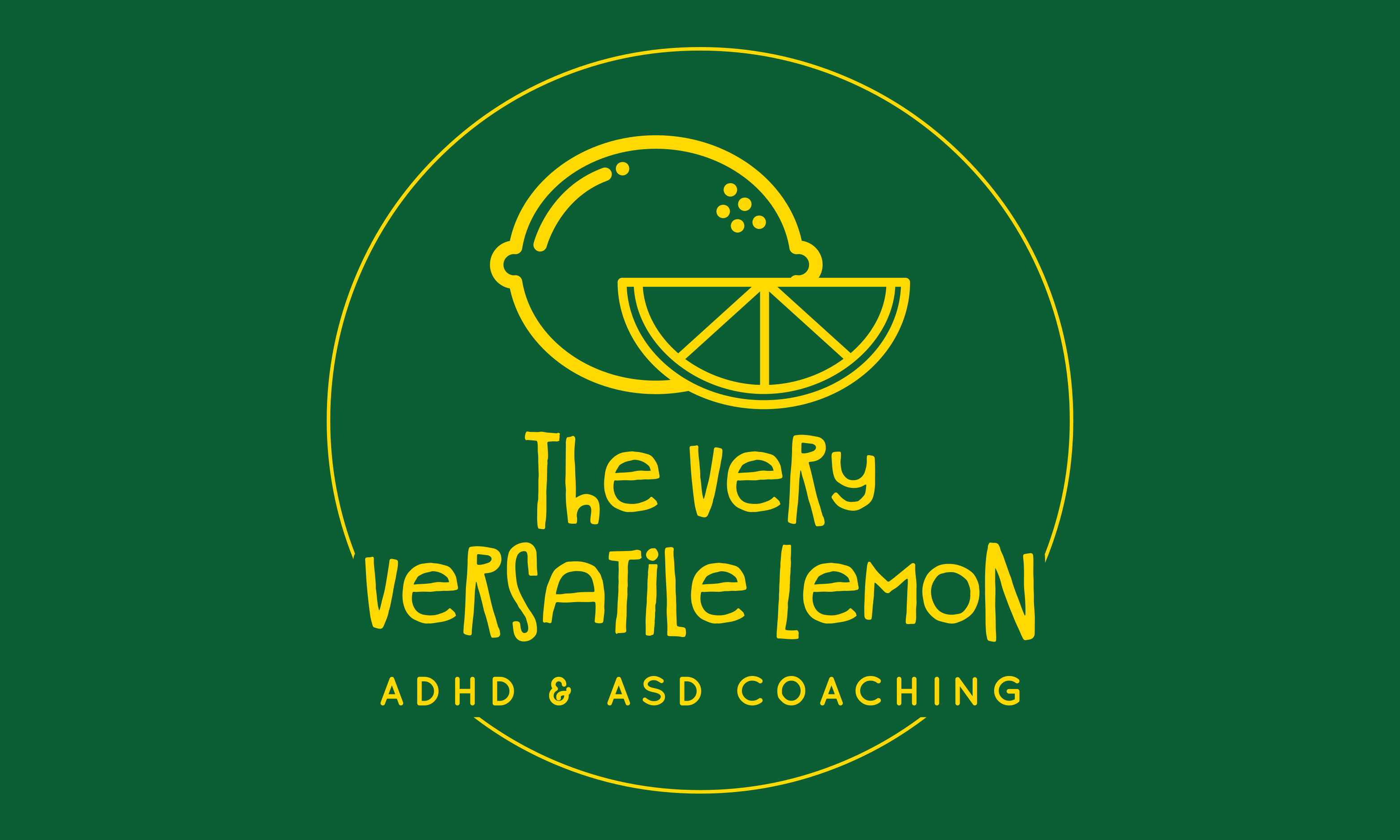
Benefits of Coaching for Co-Occurring ADHD and Autism
The benefits of coaching for adults with co-occurring ADHD and ASD are numerous. Here’s what you can expect:
- Improved Quality of Life: By managing symptoms and developing strategies, individuals can experience a significant improvement in their overall quality of life. This can include increased productivity, improved relationships, and a greater sense of well-being.
- Increased Self-Confidence: Learning how to manage co-occurring conditions can empower individuals and boost their self-confidence. Coaching helps them build on their strengths and celebrate their unique neurodiversity.
- Reduced Stress and Anxiety: Developing strategies for managing symptoms and emotions can significantly reduce stress and anxiety, leading to a calmer and more fulfilling life.
- Improved Relationships: Coaching can equip individuals with the skills they need to navigate social situations more effectively, leading to stronger relationships with family, friends, and colleagues.
- Greater Independence: Learning self-management skills allows individuals to gain greater independence and control over their lives, fostering a sense of self-efficacy.
Finding the Right ADHD and Autism Coach
When seeking an ADHD and ASD coach with expertise in co-occurring conditions, consider the following:
- Qualifications: Look for a coach certified by a reputable organisation, such as ADDCA (Attention Deficit Disorder Coaching Academy) or the International Coach Federation (ICF).
- Experience: Find a coach with experience working with adults who have both ADHD and ASD.
- Approach: Choose a coach whose approach aligns with your values and preferences. Some coaches focus on specific areas like executive function or social skills, while others offer a more holistic approach.
- Communication Style: Find a coach who you feel comfortable communicating with openly and honestly.


Conclusion
Co-occurring ADHD and ASD can be a complex challenge, but it doesn’t have to define your life. Coaching can be a powerful tool that can empower you to thrive. By developing a deeper understanding of yourself, learning new strategies, and receiving ongoing support, you can manage your symptoms, achieve your goals, and live a fulfilling life.
Additional Resources
- Attention Deficit Disorder Association: https://add.org/
- National Autistic Society: https://www.autism.org.uk/
- The Coaching Academy: https://www.the-coaching-academy.com/what-is-coaching/
- International Coach Federation: https://coachingfederation.org/
Remember: You are not alone. There are resources available to help you navigate co-occurring ADHD and ASD. Coaching can be a transformative journey towards self-discovery, empowerment, and a brighter future. Take the first step today and seek a qualified coach who can support you on your path.
For many individuals living with Attention Deficit Hyperactivity Disorder (ADHD), the world can be a whirlwind of stimuli, constant challenges with focus, and a yearning for structure. But on top of these core symptoms, a significant number of individuals with ADHD also grapple with a lesser-known phenomenon: Rejection Sensitivity Dysphoria (RSD). This potent combination can create a double whammy effect, intensifying feelings of rejection and leading to significant emotional distress. Let’s delve into the complexities of RSD and ADHD, explore how they intertwine, and identify strategies to navigate this challenging terrain.
Understanding Rejection Sensitivity Dysphoria (RSD)
RSD is not a clinical diagnosis but rather a cluster of emotional and behavioural responses associated with a heightened sensitivity to perceived rejection. It’s characterised by an intense emotional reaction to anything that feels like rejection, criticism, or disapproval, even if minor or unintentional. These reactions can include:
- Intense sadness or anger: Feeling deeply hurt or enraged by perceived rejection.
- Rumination: Obsessively dwelling on the rejection and replaying the situation in your mind.
- Social withdrawal: Isolating oneself to avoid further rejection.
- Self-blame and negative self-talk: Feeling like you’re the reason for the rejection and engaging in harsh self-criticism.
- Difficulty trusting others: Fearing further rejection, making it hard to build close relationships.
The ADHD-RSD Connection
While the exact cause of RSD is still being explored, there seems to be a strong link between ADHD and its development. Here’s how ADHD can contribute to RSD:
- Emotional Dysregulation: Difficulty managing emotions is a common feature of ADHD. This can make individuals with ADHD more vulnerable to feeling overwhelmed by perceived rejection.
- Black and White Thinking: ADHD can lead to a tendency to see things in extremes. A perceived slight can be interpreted as a complete rejection, intensifying the emotional response.
- Low Self-Esteem: Chronic struggles with focus and organisation can contribute to feelings of inadequacy, making individuals with ADHD more susceptible to feeling rejected.
- Hyperfocus on Mistakes: The tendency to hyperfocus on negative aspects can lead to dwelling on perceived criticism and amplifying its impact.

The Vicious Cycle
The combination of ADHD and RSD can create a vicious cycle:
- Fear of Rejection: Due to past experiences or heightened sensitivity, individuals with ADHD may become overly cautious and avoid social situations for fear of rejection.
- Misinterpreting Cues: Difficulty with social cues associated with ADHD can lead to misinterpretations of neutral interactions as rejection.
- Emotional Reaction: The perceived rejection triggers an intense emotional response like anger or sadness.
- Social Withdrawal: To avoid further emotional pain, the individual withdraws from social interactions, further limiting opportunities for positive connections.
Breaking Free from the Cycle: Strategies for Managing RSD with ADHD
While there’s no magic bullet for overcoming RSD, there are strategies that can help individuals with ADHD manage its impact:
- Challenge Negative Thoughts: Learn to identify and challenge self-critical thoughts and replace them with more balanced and realistic self-talk.
- Develop Emotional Regulation Skills: Practise techniques like mindfulness meditation, deep breathing exercises, or relaxation techniques to manage strong emotions.
- Improve Communication Skills: Work on expressing your needs clearly and directly to avoid misunderstandings.
- Build a Support System: Surround yourself with understanding friends, family, and professionals who can offer support and encouragement.
- ADHD Coaching: Coaching can help identify and modify negative thought patterns that contribute to RSD.

Strategies Specific to the Australian Context
Living with ADHD and RSD in Australia can present unique challenges. Here are some tips tailored to the Australian landscape:
- Seek Support from Local Organisations: Reach out to organisations like ADHD Australia or the Australasian College of Neuropsychologists for support and resources specific to the Australian context, or ones local to where you live.
- Consider Telehealth Options: Telehealth services can provide access to therapists and counsellors specialising in ADHD and RSD, even in remote areas.
- Mindfulness in the Australian Bush: Practising mindfulness outdoors, whether in a local park or on a bushwalking trip, can be a powerful way to manage stress and connect with nature.
Remember:
- You’re not alone. Many Australians with ADHD experience RSD.
- Be patient with yourself. Building coping skills takes time and effort.
- Celebrate small victories. Every step towards managing RSD is a positive step.
Building ADHD and RSD Resilience
Living with ADHD and RSD can be challenging, but with the right support and a willingness to learn new skills, you can build resilience and navigate the complexities of social interactions. By understanding how ADHD contributes to RSD, you can develop targeted strategies to manage your emotional responses and build healthier relationships. Here are some additional tips:
- Focus on Your Strengths: ADHD comes with a unique set of strengths like creativity, problem-solving skills, and boundless energy. Focus on these strengths and use them to build confidence and self-esteem.
- Practice Self-Compassion: Be kind to yourself. Everyone makes mistakes and experiences rejection sometimes.
- Celebrate Differences: Embrace your neurodiversity and recognise that your unique perspective can be a valuable asset.
- Educate Others: Talking openly about ADHD and RSD with friends, family, and colleagues can foster understanding and empathy.
- Seek Professional Help: If you’re struggling to manage RSD on your own, don’t hesitate to seek professional help from a therapist or counsellor who specialises in ADHD and related conditions.
ADHD Coaching: A Targeted Approach
In addition to therapy and other self-management strategies, ADHD coaching can be a valuable tool for individuals with ADHD and RSD. ADHD coaches can provide tailored guidance and support in areas like:
- Developing communication skills: Coaches can help individuals with ADHD learn to express themselves clearly, interpret social cues effectively, and navigate conversations with greater confidence.
- Building emotional regulation skills: Coaches can teach techniques for managing strong emotions, reducing impulsivity, and fostering self-compassion.
- Time management and organisation: Developing strategies to prioritise tasks, manage distractions, and meet deadlines can significantly reduce stress and improve self-esteem.
- Building self-advocacy skills: Coaches can empower individuals with ADHD to advocate for their needs in educational settings, workplaces, and social situations.
By working with an ADHD coach, individuals with ADHD and RSD can develop a personalised roadmap for managing these challenges and unlocking their full potential.
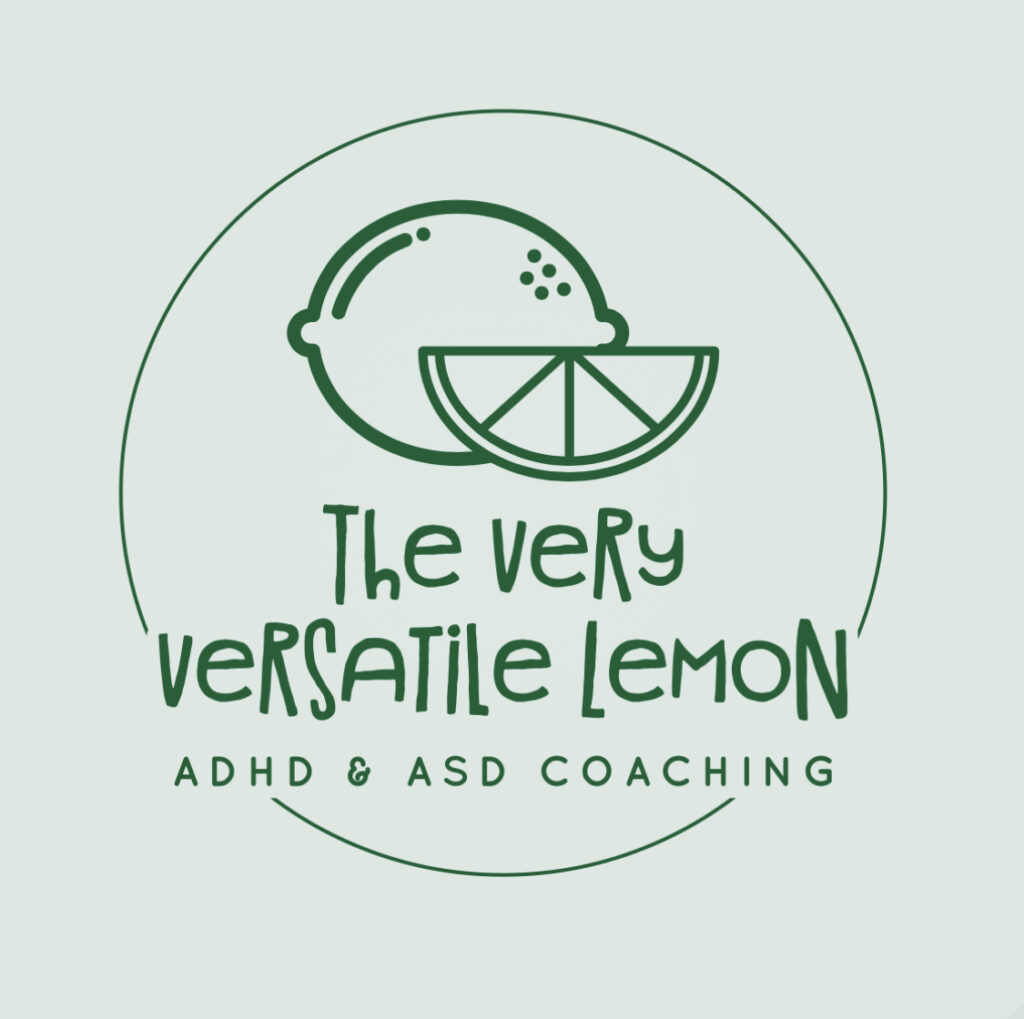
A Brighter Future
By taking an active role in managing RSD, individuals with ADHD can build stronger relationships, reduce anxiety, and experience a greater sense of well-being. Remember, you are not defined by your challenges. With determination and the right support system, you can overcome the hurdles presented by ADHD and RSD and forge a brighter future filled with positive connections and a sense of belonging.
Conclusion
The journey towards managing RSD and living well with ADHD is an ongoing process. However, with a combination of self-awareness, targeted strategies, and a supportive community, you can navigate the challenges and build a life filled with meaning and connection.
Additional Resources – Australia
- ADHD Australia: https://www.adhdaustralia.org.au/
- Australasian College of Neuropsychologists: https://groups.psychology.org.au/ccn/
- Beyond Blue: https://www.beyondblue.org.au/about-us/contact-us (For support with anxiety and depression)
- ADHD Coaching: https://versatilelemon.com
For many individuals on the autism spectrum, the world can feel like a sensory overload, a constant barrage of stimuli requiring constant processing. While this unique neurology comes with its own strengths, it also carries the risk of autistic burnout, a state of profound physical, emotional, and mental exhaustion. Understanding this phenomenon and exploring strategies for recovery, including coaching, can be crucial for individuals experiencing autistic burnout, as well as their loved ones.
What is Autistic Burnout?
Autistic burnout isn’t simply feeling tired or stressed. It’s a complex and distinct experience often triggered by prolonged exposure to overwhelming environments and demands that exceed an individual’s capacity to cope. Unlike typical burnout, which is often work-related, autistic burnout can stem from various factors, including:
- Sensory overload: Constant exposure to bright lights, loud noises, or overwhelming social interactions can deplete energy reserves.
- Social challenges: Difficulty with social cues, communication, and navigating social situations can be emotionally draining.
- Rigid routines and transitions: Unexpected changes or disruptions to routines can be highly stressful for individuals with autism.
- Camouflaging: Masking autistic traits to fit in can lead to emotional and mental exhaustion.
Recognising the Signs
Autistic burnout can manifest in various ways, and it’s important to remember that the experience can be unique to each individual. Some common signs of autistic burnout include:
- Emotional exhaustion: Feeling constantly drained and emotionally numb.
- Increased anxiety and depression: Feeling overwhelmed, hopeless, and losing interest in activities previously enjoyed.
- Loss of motivation: Difficulty completing tasks and a general lack of energy to engage in daily activities.
- Changes in sleep patterns: Difficulty sleeping or sleeping excessively.
- Sensory sensitivities: Increased sensitivity to sights, sounds, smells, tastes, or textures.
- Social withdrawal: Desire to isolate oneself from others, even loved ones.
- Cognitive difficulties: Difficulty concentrating, remembering things, or making decisions.

Recovery Strategies
Autistic burnout requires a multifaceted approach to recovery. Here are some strategies that can be beneficial:
- Prioritise rest and self-care: Ensure adequate sleep, relaxation activities, and engage in activities that bring joy and calmness. Special interests are a great way to decompress and anchor oneself.
- Reduce sensory overload: Identify and minimise triggers that contribute to sensory overload. This might include wearing noise-cancelling headphones, utilising calming spaces in the home, or reducing screen time.
- Establish healthy routines: Create predictable and consistent routines to provide structure and reduce the stress of unexpected changes.
- Seek professional support: Consider therapies like Cognitive Behavioural Therapy (CBT) to develop coping mechanisms and manage stress.
- Explore coaching: A coach specialising in autistic needs can provide tailored guidance and support towards managing autistic burnout and navigating daily life challenges.
The Role of Coaching in Recovery
Coaching can be a valuable tool in the journey towards recovering from autistic burnout. Here’s how:
- Personalised support: Unlike one-size-fits-all approaches, coaching provides personalised guidance and support tailored to the individual’s specific needs and experiences.
- Building self-awareness: Coaching can help individuals with autism understand their triggers, strengths, and limitations, empowering them to manage their energy and make informed choices.
- Developing coping mechanisms: A coach can help individuals develop practical skills to navigate stressful situations, manage sensory overload, and improve communication and social interactions.
- Goal setting and achieving: Coaching provides support in setting realistic goals and developing strategies to achieve them, fostering a sense of accomplishment and motivation.
- Advocacy and support: A coach can act as an advocate, helping individuals navigate interactions with healthcare professionals, educational institutions, or employers to ensure their needs are understood and supported.

Finding the Right Coach
Finding a qualified and experienced coach specialising in autism and burnout is crucial. Here are some tips:
- Seek recommendations: Look at reviews online, or ask therapists, psychiatrists, or other professionals you trust for recommendations for coaches specialising in autism.
- Research and interview coaches: Explore the qualifications, experience, and approach of potential coaches before making a decision. Coaches should offer free discovery calls to allow for you to get to know one another and to allow you to ask any questions.
- Consider your specific needs: Look for a coach who has experience working with autistic individuals experiencing burnout similar to yours.
- Utilises a collaborative and strength-based approach: Look for a coach who works with your diagnosis, and not against it, harnessing your strengths to overcome your challenges.
- Offers a safe and supportive environment to explore your experiences: Coaches should work with you at your level, in a non-judgemental and supportive manner.
Conclusion
Autistic burnout is a real and challenging experience. However, by understanding the signs, exploring various recovery strategies, and seeking professional support, individuals with autism can develop the necessary tools to overcome the burnout and reach a place of renewed energy and wellbeing. Remember, you are not alone in this journey, and with support and self-compassion, you can weather the storm and find your calm.
Additional Resources
- The National Autistic Society: https://www.autism.org.uk
- The Autistic Self Advocacy Network: https://autisticadvocacy.org/
- Autism Awareness Australia: https://www.autismawareness.com.au/
- Aspire Aspergers Victoria: https://aspergersvic.org.au/
- Autism CRC: https://www.autismcrc.com.au/
The seemingly lacking level of validation. The never-ending email chain. The constant pinging of notifications. For individuals with Attention Deficit Hyperactivity Disorder (ADHD), the bustling environment of the workplace can feel like an assault course designed to trip you up at every turn.
But what if we reframed the narrative? What if, instead of focusing solely on the challenges, we acknowledged the unique strengths that individuals with ADHD possess? Strengths that, when harnessed and nurtured, can propel ADHDers to excel in their careers and become valuable assets to any organisation.
Unlocking Your Superpowers
The first step in this journey is understanding that ADHD isn’t just about limitations; it’s a neurological difference that comes with a distinct set of superpowers. These strengths often include:
- Hyperfocus: The ability to laser-focus on tasks that individuals find engaging, leading to bursts of exceptional productivity. Imagine tackling a complex problem and becoming completely immersed in the process, losing track of time as innovative solutions flow effortlessly.
- Creativity: An innate ability to think outside the box and bring fresh perspectives to problem-solving. This “divergent thinking” allows those with ADHD to see challenges from unique angles, fostering innovation within teams and leading to breakthrough solutions.
- Enthusiasm: A natural tendency to approach work with positive energy and infectious enthusiasm. This contagious passion can motivate and inspire colleagues, creating a dynamic and stimulating work environment.
- Resilience: The ability to bounce back from setbacks and adapt to changing circumstances with agility. This characteristic allows individuals with ADHD to persevere through challenges, learn from mistakes, and continuously improve.
Building Your Toolkit for Success
By leveraging these strengths and implementing effective strategies, you can navigate workplace challenges with confidence:
- Embrace Structure and Organisation: Create consistent routines that work for you. Utilise detailed to-do lists and leverage calendars and planners to stay organised and on track.
- Minimise Distractions: Find quiet workspaces, utilise noise-cancelling headphones, and block out social media notifications during focused work periods. This reduces distractions and helps you maintain concentration (this one is my personal favourite).
- Break Down the Mountains: Divide large projects into smaller, manageable steps. This approach prevents feeling overwhelmed and allows you to focus on one achievable task at a time, facilitating a sense of accomplishment and progress.
- Communicate Openly: Openly discuss your ADHD with your manager and colleagues, explaining how they can best support you. This could involve requesting flexible deadlines, breaks for movement, or clear and concise instructions. By open communication, you empower others to understand your needs and foster an inclusive work environment.
- Seek Professional Support: Consider seeking professional guidance in the form of ADHD coaching or therapy specifically tailored to helping individuals with ADHD thrive. These professionals can equip you with additional tools and strategies, helping you develop effective coping mechanisms and optimise your strengths within the workplace and your life.

Cultivating a Neurodiverse Workplace
Employers also play a crucial role in empowering individuals with ADHD and fostering a supportive and inclusive environment:
- Offer Flexible Work Arrangements: Consider offering remote work options, adjusted schedules, or breaks for movement to cater to individual needs and preferences. This flexibility allows individuals with ADHD to work in an environment that best suits their work style and minimises distractions.
- Provide Clear and Concise Communication: Avoid ambiguity and offer multiple communication channels (written and verbal) when delivering instructions. This ensures understanding and reduces confusion for individuals with ADHD who may struggle with processing information in fast-paced environments.
- Promote Open Communication: Encourage employees with ADHD to feel comfortable discussing their needs and requesting accommodations. Foster a culture of open communication and understanding. By creating a safe space for open dialogue, you can address challenges proactively and ensure a comfortable and productive work environment for all.
- Celebrate Neurodiversity: Recognise and value the unique contributions individuals with ADHD bring to the team. Their creativity, enthusiasm, and resilience are valuable assets that can benefit the entire organisation. By embracing neurodiversity, organisations unlock the full potential of their workforce and foster a more inclusive and innovative work environment.
Embracing Your Journey
Living with ADHD doesn’t have to limit your success in the workplace. By understanding your strengths, implementing effective strategies, seeking support, and working within a supportive environment, you can create the foundation for a thriving career.
Remember, your unique neurology is not a limitation; it’s your superpower. Embrace your strengths, conquer the challenges, and chart your own course to success in the workplace. You have the potential to become a force to be reckoned with!
Don’t shy away from seeking coaching, mentorship or joining support groups specific to individuals with ADHD in the workplace. Connecting with others who understand your experiences can provide valuable insights, encouragement, and a sense of community.
Remember… change is a journey, not a destination. Be patient with yourself as you implement new strategies and navigate the seemingly never-ending challenges. Celebrate your victories, big and small, and learn from setbacks. Write these down somewhere visible to help remind and anchor you. With dedication, self-compassion, and a supportive network, you can create a fulfilling and successful career that leverages your unique strengths and allows you to thrive in the workplace.

Additional Resources:
- CHADD (Children and Adults with Attention-Deficit/Hyperactivity Disorder): https://chadd.org/
- ADDitude Magazine: https://www.additudemag.com/
- National Institute of Mental Health: https://infocenter.nimh.nih.gov/publications/attention-deficithyperactivity-disorder-adults-what-you-need-know
By taking charge of your ADHD and harnessing your unique strengths, you can transform the workplace from an assault course into a launchpad for success. Go forth, conquer your challenges, and embrace the amazing things you can achieve! Remember, you are not defined by your ADHD, but by your resilience, creativity, and unwavering spirit. Now go out there and show the world what you’re truly capable of!
Introduction
Autistic burnout is a phenomenon that affects many individuals on the autism spectrum, yet it remains widely misunderstood. It’s characterised by a state of physical, emotional, and mental exhaustion, often resulting from prolonged stress, overload, or masking – the practice of camouflaging one’s autistic traits to fit into societal norms. In this blog post, we’ll delve into what autistic burnout entails, its impact, and most importantly, strategies to overcome and navigate through it.
What is Autistic Burnout?
Autistic burnout isn’t simply feeling tired or stressed; it’s a unique experience tied to the sensory and cognitive differences that come with being autistic. It can manifest differently in each individual but commonly involves heightened anxiety, executive dysfunction, sensory overload, and a depletion of coping mechanisms. Often, burnout occurs after a period of masking – the exhausting effort of appearing neurotypical, which can lead to a significant energy drain and mental fatigue.
Impact of Autistic Burnout
The impact of autistic burnout can be profound, affecting various aspects of an individual’s life. From difficulties in communication and social interactions to challenges in maintaining routines or fulfilling responsibilities, burnout can hinder daily functioning and lead to feelings of isolation, depression, and even physical health issues. Recognising the signs of burnout and addressing them promptly is crucial for promoting well-being and preventing further deterioration.
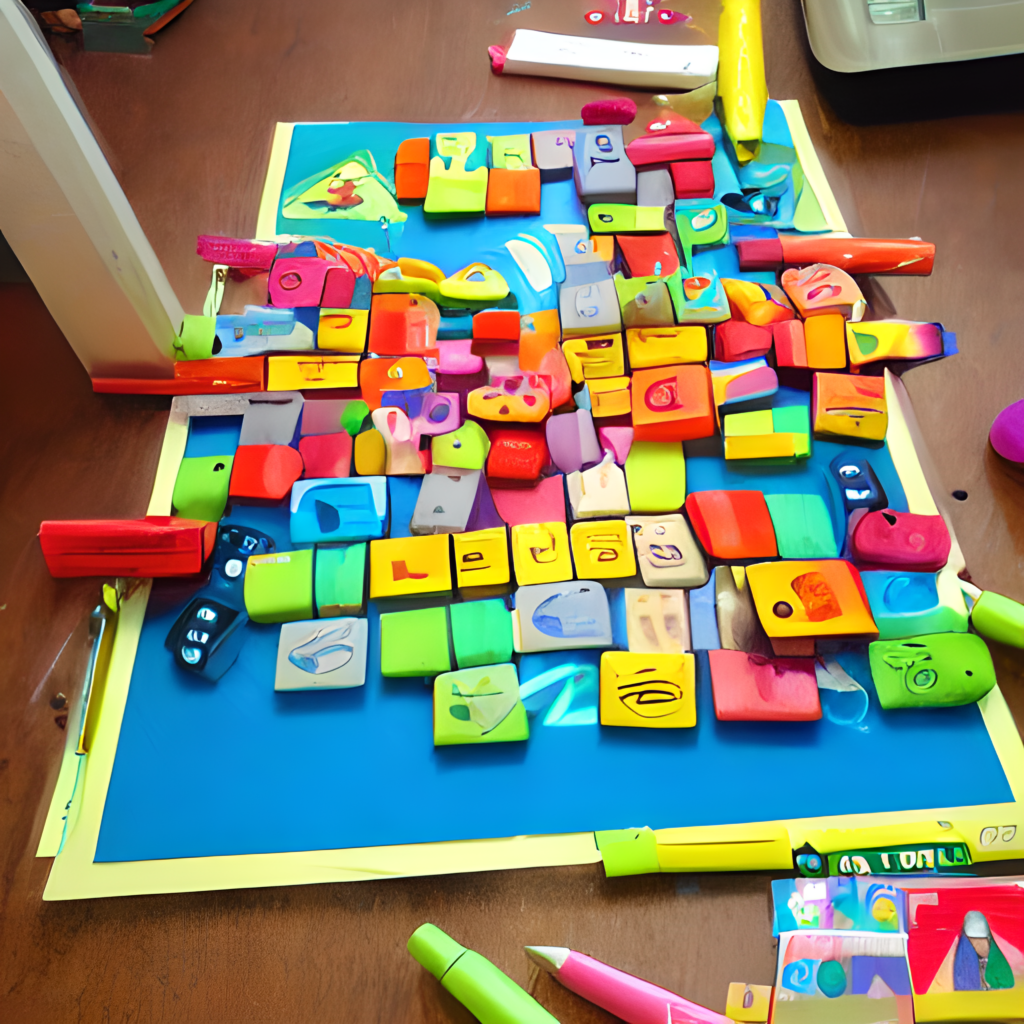
Autism Coaching
Seeking guidance from autism coaches can be immensely beneficial in navigating the challenges of autistic burnout. Autism coaches specialise in understanding the unique needs and strengths of autistic individuals, providing personalised support and strategies for overcoming obstacles and achieving personal goals. Through coaching sessions, individuals can gain valuable insights into their autistic traits, learn effective coping mechanisms, and develop practical strategies for managing burnout and enhancing overall well-being. Autism coaching offers a safe and non-judgmental space for individuals to explore their experiences, build self-confidence, and cultivate self-advocacy skills. By working collaboratively with a knowledgeable coach, individuals can develop a deeper understanding of themselves, uncover their potential, and thrive in both personal and professional aspects of life. (Learn more about autism coaching: The Very Versatile Lemon)
Strategies for Overcoming Autistic Burnout
- Self-awareness and Acceptance: Understanding one’s own autistic traits, limitations, and needs is the first step in managing burnout. Acceptance of oneself as an autistic individual, with unique strengths and challenges, can alleviate the pressure of constantly masking and trying to fit in. (For further reading: Autism Self-Advocacy Network)
- Establishing Boundaries: Learning to set boundaries is essential for protecting one’s mental and emotional energy. This may involve saying no to excessive social commitments, sensory triggers, or tasks that exceed one’s capacity. (For tips on setting boundaries: Psychology Today)
- Sensory Regulation Techniques: Developing personalised sensory regulation techniques can help in managing sensory overload. This could include creating a sensory-friendly environment, using sensory tools like noise-canceling headphones or fidget toys, and practicing relaxation techniques such as deep breathing or mindfulness. (Explore sensory strategies: Sensory Processing Disorder Foundation)
- Prioritising Self-Care: Prioritising self-care activities that promote relaxation and rejuvenation is vital for combating burnout. This could involve engaging in hobbies, spending time in nature, getting adequate rest, and maintaining a healthy lifestyle through exercise and nutrition. (For self-care ideas: Self-Care for All)
- Seeking Support: Seeking support from understanding friends, family members, or professionals, such as coaches, who are knowledgeable about autism can provide validation, guidance, and practical assistance in navigating through burnout. (Find support networks: Autism Society)
- Advocacy and Community Involvement: Engaging in advocacy efforts and connecting with the autistic community can foster a sense of belonging and empowerment. Sharing experiences, insights, and resources with others can help combat feelings of isolation and promote social inclusion. (Join autistic advocacy groups: Autistic Women & Nonbinary Network)

Conclusion
Autistic burnout is a real and challenging experience for many individuals on the autism spectrum, but it’s not insurmountable. By fostering self-awareness, establishing boundaries, prioritising self-care, seeking support, and engaging in advocacy efforts, individuals can navigate through burnout and thrive. It’s essential to recognise that everyone’s journey is unique, and finding strategies that work best for oneself is key to overcoming and managing burnout effectively. With greater understanding and support, individuals can embark on a path towards holistic well-being and fulfilment.

